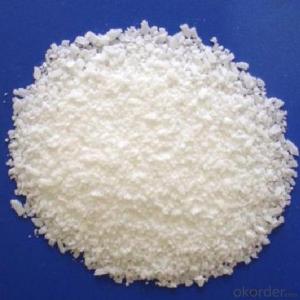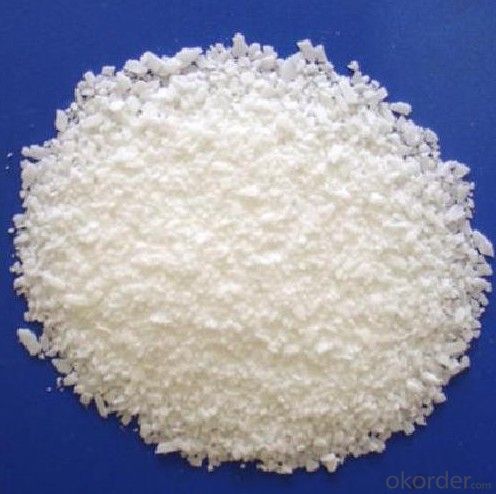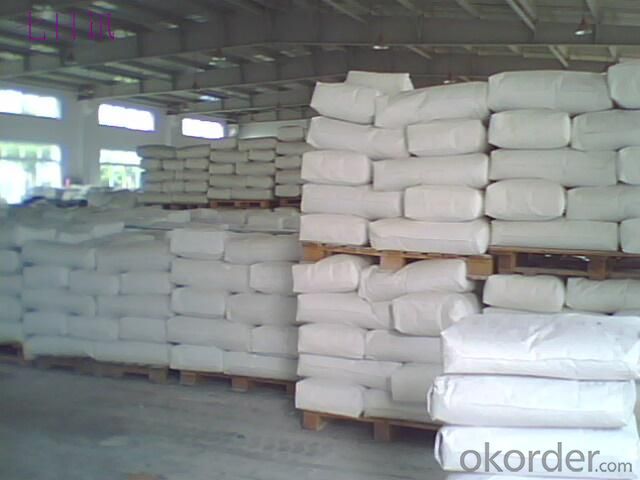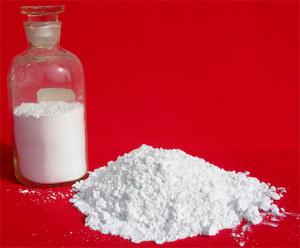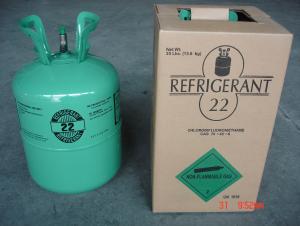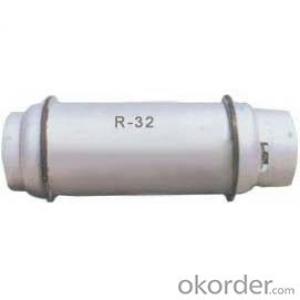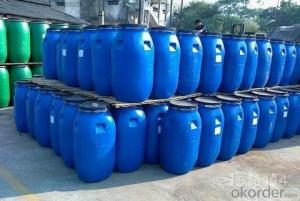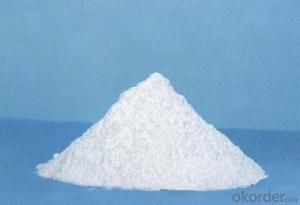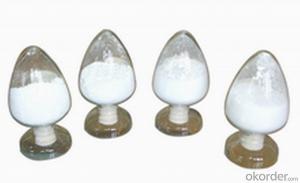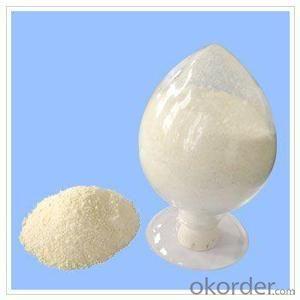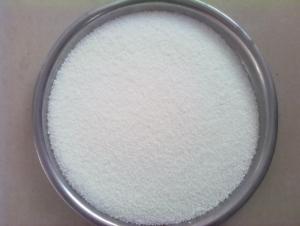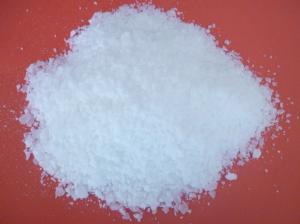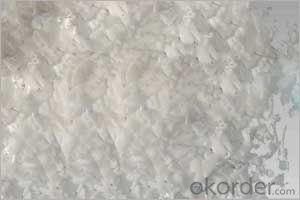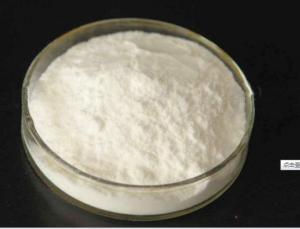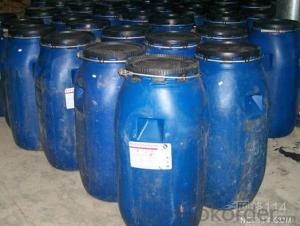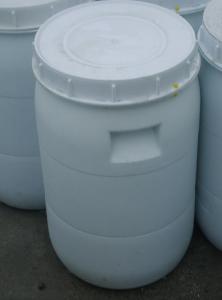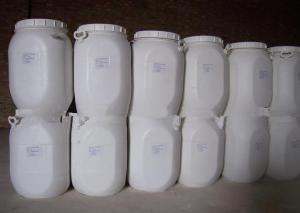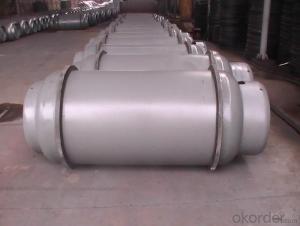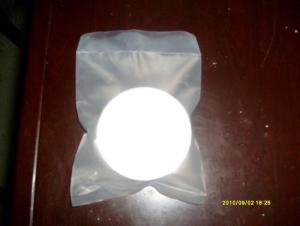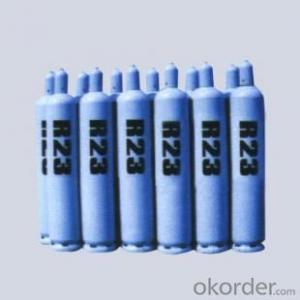Stearic Acid 200/400/800 For Plastic/Cosmetic/Rubber/ Industry
- Loading Port:
- Tianjin
- Payment Terms:
- TT OR LC
- Min Order Qty:
- -
- Supply Capability:
- 8000MT/month m.t./month
OKorder Service Pledge
OKorder Financial Service
You Might Also Like
Stearic acid
Formula: C18H36O2
Structural Formula:CH3(CH2)16COOH
Product Description:
Shaped like Lump, flake; Saturated fatty acid mainly with C16 and C18, white flake solid at ambient temperature, not dissolved in water, slightly dissolved in benzene and carbon bisulfide, and easily dissolved in hot alcohol. No smell no poison. It has the general chemical properties of organic carboxylic acid.
Physicochemical Properties:
pure product is white with a shiny soft small pieces, melting point 69.6 degrees, the boiling point of 376.1 degrees. Relative density 0.9408, refractive index 1.4299, slowly volatile in the 90-100 degrees. Slightly soluble in cold water, soluble in alcohol, acetone, soluble in benzene, chloroform, ethyl ether, carbon tetrachloride, carbon disulfide, toluene and so on.
Specification:
Item | Index | |||||
Grade No. | 1842 | 1838 | 1820 | 1860 | 1870 | 1880 |
Iodine value gI2/100g ≤ | ≤5.0 | ≤5.0 | ≤5.0 | ≤6.0 | ≤7.0 | ≤8.0 |
Saponification value mgKOH/g | 206~211 | 206-213 | 214-216 | 193-220 | 193-220 | 192-218 |
Acid value mgKOH/g | 208~210 | 210~211.5 | 214-225 | 182-218 | 192-218 | 193-220 |
Chroma (Hazen) ≤ | ≤60 | ≤80 | ≤100 | 200-400 | ≤150 | 400 |
Freezing point °C | 54~57 | 54~57 | 55~57 | 54 | 52 | 52 |
Moisture % ≤ | ≤0.2 | ≤0.2 | ≤0.2 | ≤0.3 | ≤0.3 | ≤0.3 |
Inorganic acid % ≤ | 0.001 | 0.001 | 0.001 | 0.001 | 0.001 | 0.001 |
Suggest Uses:
Mainly for the production of stearic acid salts: Widely used system for cosmetics, plastic cold-resistant plasticizer, release agent, stabilizer, surfactants, rubber vulcanization accelerator, waterproof agent, polishing agent, metal soap, metal mineral flotation agent, softeners, pharmaceuticals, and other organic chemicals.
In addition, oil-soluble pigments can be used as solvents, crayons transfer slip agent, waxed paper lighting agent, stearic acid glyceride emulsifier, etc..
Packing :25/50kg in PP bag ,25MT/20GP
Product Storage:
in dry warehouse ventilation should be more than 10mm from the ground to avoid damp products in the above-mentioned conditions, from the date of delivery for one year shelf life.


- Q: What is the isomeric structure of oxygen-containing derivatives?
- Play the Transformers. As long as the same molecular formula, you can group out how many different structures, there are a number of isomers.
- Q: Can the carboxylic acid react with sodium?
- can
- Q: High school chemical hydrocarbons with hydrocarbon derivatives with water solubility, density for accurate and comprehensive summary, thank you. Out of college entrance examination
- The amount of forgotten, just remember the carbon six rings
- Q: Are all carbon compounds all organic?
- Of course not Like carbon monoxide is not friends ~ ~ ~ In general, organic matter will contain at least two elements of carbon and hydrogen, but carbon tetrachloride is an exception. Many of the concepts in chemistry, or else there is a special case, or that is limited, can only control the total but can not control the whole. It is very annoying thing oh ~ ~ ~
- Q: The role of aromatic hydrocarbons
- Two cases: First, the name of monocyclic aromatic hydrocarbons, usually benzene ring for the mother, alkyl as a substituent. Second, the structure is more complex aromatic hydrocarbons, usually based on the hydrocarbon base, benzene ring as a substituent. Xylene, 2-methyl-3-phenylpentane, diphenylmethane, etc. For the naming of multifunctional compounds, attention is given to the priority order of the functional groups. The priority is preceded by the parent, usually: cations, COOH SO2H, COOR, COCl, CONH2, CN, CHO, CO, OH, SH, NH2, alkynes, alkenes, ethers, X, NO2, etc. [2]
- Q: What are the inorganic compounds
- Hydrocarbons and their derivatives.
- Q: What are the derivatives of hydrocarbons?
- Including alcohols, acids, aldehydes, ethers, esters, halogenated hydrocarbons and the like
- Q: Is the system name of a hydrocarbon derivative named if the question can be named according to the nomenclature of the alkane?
- Halogen can be named after the alkane, the other can not
- Q: The aromatic hydrocarbon derivative refers to monocyclic or polycyclic
- To see what is the derivative of aromatic hydrocarbons, by its own is a single ring or multi-ring decision
- Q: What is organic matter? Candle is organic?
- For example: CH4 C2H6O and so are organic matter
Send your message to us
Stearic Acid 200/400/800 For Plastic/Cosmetic/Rubber/ Industry
- Loading Port:
- Tianjin
- Payment Terms:
- TT OR LC
- Min Order Qty:
- -
- Supply Capability:
- 8000MT/month m.t./month
OKorder Service Pledge
OKorder Financial Service
Similar products
Hot products
Hot Searches
